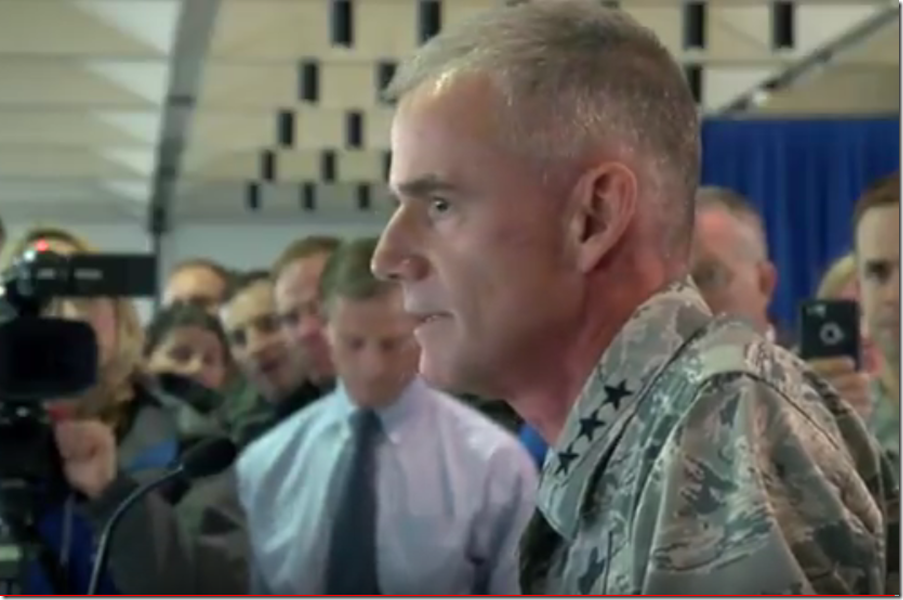Profile In Leadership: Air Force Academy Superintendent’s Race Speech
On Monday, five black cadet candidates at the U.S. Air Force Academy Preparatory School were targeted in message boards with ugly racist attacks. According to the Air Force Times:
“Lt. Col. Allen Herritage, director of public affairs for the academy, said the slurs were discovered Monday. One cadet candidate’s mother posted a photo on her Facebook page Wednesday that shows the words “go home n*****r” written on the white board outside her son’s room.”
Lt. Gen. Jay Silveria, superintendent of the US Air Force Academy (USAFA), addressed thousands of students yesterday about the attack. His five-minute speech is worth watching in full. As many commenters on the YouTube video remarked, “This is what leadership looks like.”
6 Ways to Deliver a Powerful Message
It’s easy to see why this speech went viral. To help other speakers use some of the same elements to improve their own talks, I’ve dissected six of the things General Silveria did so well.
1. His Message Was Unambiguous
Silveria’s message was so clear — such a perfect example of a “Bright Shiny Object”— that it’s virtually impossible to believe any of his cadets missed it: “If you can’t treat someone with dignity and respect, then get out.” He also had a strong supporting message that buttressed his main one: “The appropriate response for horrible language and horrible ideas, the appropriate response is a better idea.”
2. He Closed Strong
In essence, he “dropped the mic” at the end of his talk. By refusing to add superfluous language at the end to help soften his message, he ensured that his main message (“…then get out”) would retain its strength and land with a bang. Also, watch his body language after he delivered his final words; his tone supplemented his unwavering message perfectly.
3. He Invoked The Power Of The Herd
Silveria spent considerable time listing other leaders in the room, which sent a message that he wasn’t speaking for himself, but on behalf of the entire leadership and management team.
“There are so many people here, they’re lining the outside along the windows. These are members of the faculty, coaching staff, AOCs, AMTs. from the air fields, from my staff, and my headquarters. All aspects of the 10th Air Base Wing, all aspects that make up USAFA, and the United States Air Force Academy. Leadership is here, you heard from Brig. Gen. Goodwin, Brig Gen Armagost is here….”
In addition to presenting a powerful unified face to the cadets, this device almost certainly served as a useful reinforcement of priorities to those in leadership positions, as well.
4. He Demanded An Action Item
By asking the cadets to take out their cell phones, Silveria was forcing them to become active participants rather than passive observers. A cynical interpretation might be that he was trying to create a viral moment (even if that’s true, such a viral moment could only help spread their values to others inside and outside the Air Force) — but a friendlier one would acknowledge the power of having that moment on the phones of thousands of cadets as a permanent reminder.
5. He Avoided Political Landmines
It’s impossible to watch this speech without understanding the subtext of the political and cultural moment. And while many people will interpret this speech as, in Twitter lexicon, a “subtweet” of President Trump, he did a nice job of stating USAFA’s values without putting a specific spotlight on any individual, government official, or political party.
6. His Physical Delivery Emphasized Audience Connection
Silveria is obviously a good extemporaneous speaker — but if you watch carefully, you’ll see that he looked down and referenced his notes several times. When he did so, he used the “see, stop, say” technique, in which he stopped speaking when referring to his notes and only resumed when he looked back up and made eye contact with a member of the audience. Doing so demonstrated the sincerity of his message (if he needed to read his values, would they really have come across as sincerely?) and mastery of his material.




